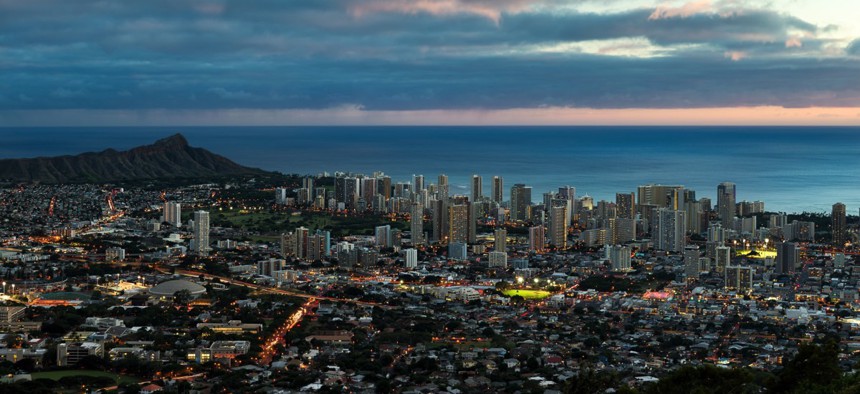How Can Honolulu Ease Its Cost of Living Pains and Other Resilience Challenges?

Honolulu, Hawaii
New Chief Resilience Officer Josh Stanbro’s résumé makes him well equipped to confront shocks and stresses like climate change, homelessness and natural disasters.
Residents of Hawaii born in the archipelago dipped below 50 percent of the population two years ago, a testament to the difficulties locals face making a living and raising a family on the islands that comprise the 50th State.
The high cost of living in Honolulu, located on the island of Oahu, is a long-term challenge Joshua Stanbro plans to address starting May 1, when he becomes City and County of Honolulu’s first chief resilience officer.
Having first worked as the The Trust for Public Land–Hawaii’s project manager, acquiring more than 25,000 acres for conservation, he understands the community’s connection to landscapes recreationally and as sacred spaces.
“Knowing how important land is to culture, people, infrastructure and greenspace is hugely important,” Stanbro told Route Fifty in a phone interview.
More recently, Stanbro led the Fresh Water Initiative and Community Restoration Partnership for the Hawai’i Community Foundation as program director. He’s familiar with some of the impacts of climate change on Oahu, including rainfall shortages that threatens the water supply and coastal erosion.
Hawaii also has very low rates of voter participation, which can present challenges for community engagement.
“He’s conscious and engaged in social justice work and uniquely embodies the land for people ethos,” said Katya Sienkiewicz, 100 Resilient Cities director of city and practice management. “In Honolulu, so many issues are around community engagement.”
Honolulu is part of the resilience network’s third wave of member cities along with Louisville, Kentucky, which also recently appointed a CRO.
Last Election Day, a ballot measure passed by more than 16 percent of the vote in support of establishing Honolulu’s new five-person Office of Climate Change, Sustainability and Resiliency, which Stanbro will serve as executive director of—in addition to sitting on the mayor’s cabinet and developing and implementing a resilience strategy for Honolulu.
“One of the most important things we can do is be good neighbors and reach out to the people around us,” Stanbro said. “The biggest resilience tool we have is that long-term capital of communities working together and looking out for each other.”
The city did just that when an earthquake hit the islands in 2006 and again, five or six years ago, when a power grid went down causing a blackout that had people emptying their fridges.
Another, ever-present threat Honolulu faces is tsunamis.
“There is no tsunami season, so that is always a shock we have to prepare for,” said Andrew Pereira, spokesman for Mayor Kirk Caldwell.
Long-term stresses for the city-county include a lack of affordable housing, the highest per-capita homeless rate in the nation—Stanbro is considering new transitional shelter areas around the island with partners—stormwater capture, and sea-level rise.
Many of the short-term shocks Honolulu faces can further displace residents, and scientists predict climate change could produce two to three times the number of hurricanes that could threaten the in Hawaiian islands. It took eight years for the GDP of Tahiti to recover after being hit by one, Stanbro said.
Honolulu and 100RC are reaching out to nongovernmental organizations dealing with the environment and homelessness plus foundations, academic experts, and state representatives to host a resilience workshop later this spring. The event will officially launch the city-county’s new office, though partners from the Sierra Club to Sea Grant University have already voiced their support.
“By partnering with folks that have those programs and missions already underway, we can leverage the networks already built, instead of reinventing or adding programs,” Stanbro said.
He knows most of the key players, having helped them craft 2030 sustainability benchmarks for everything from energy conservation to workforce development as part of the statewide Aloha+Challenge.
Isolated geographically, Honolulu is unique in its resilience struggles and, at the same time, shares some with other 100RC cities grappling with climate change, natural disasters of all kinds, and even juggling U.S. naval assets like Norfolk, Virginia.
“Honolulu is an incredible candidate to catalyze and share a lot of learning between cities in the network,” Sienkiewicz said.
Dave Nyczepir is a News Editor at Government Executive’s Route Fifty and is based in Washington, D.C.
NEXT STORY: GSA launches virtual assistant pilot






